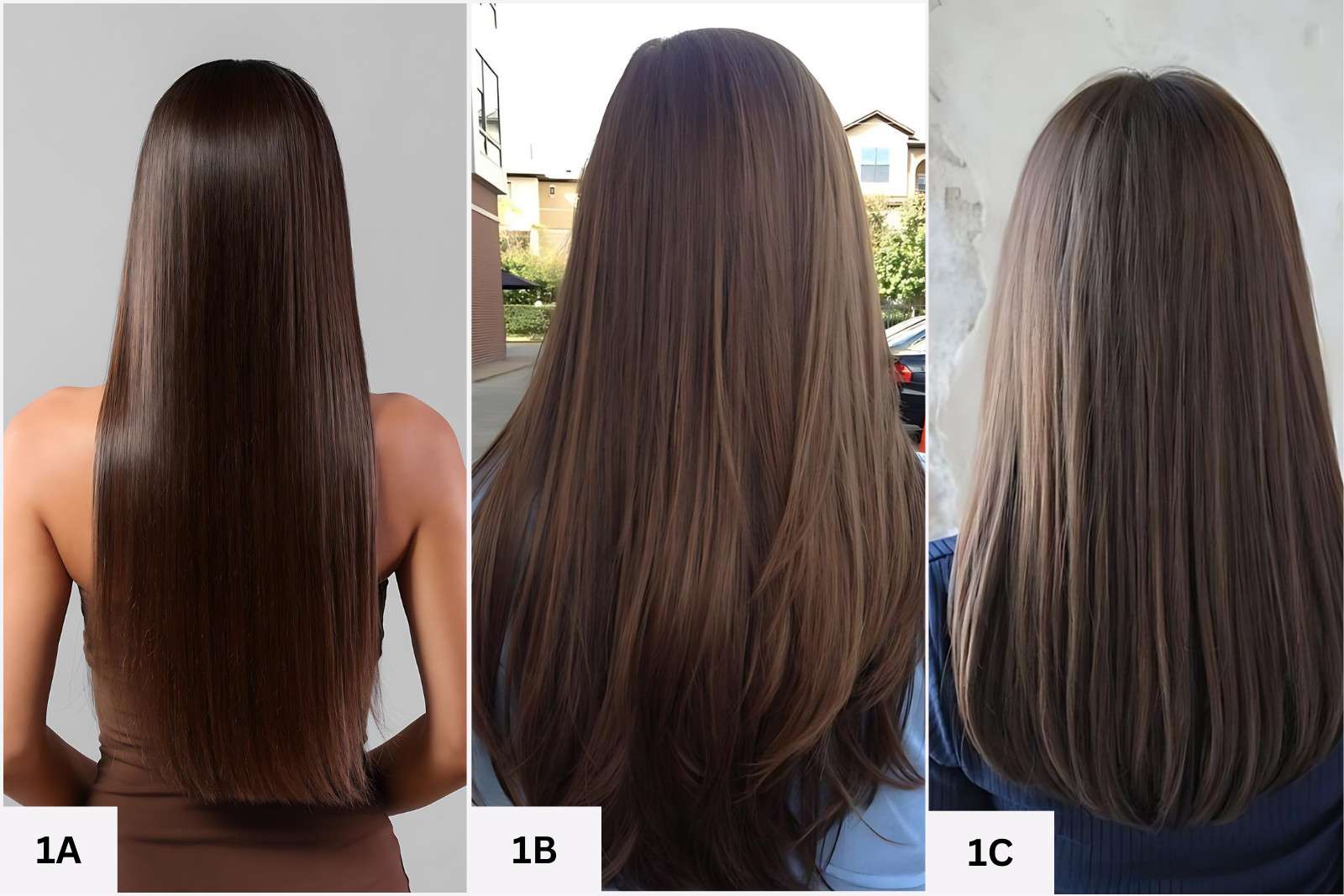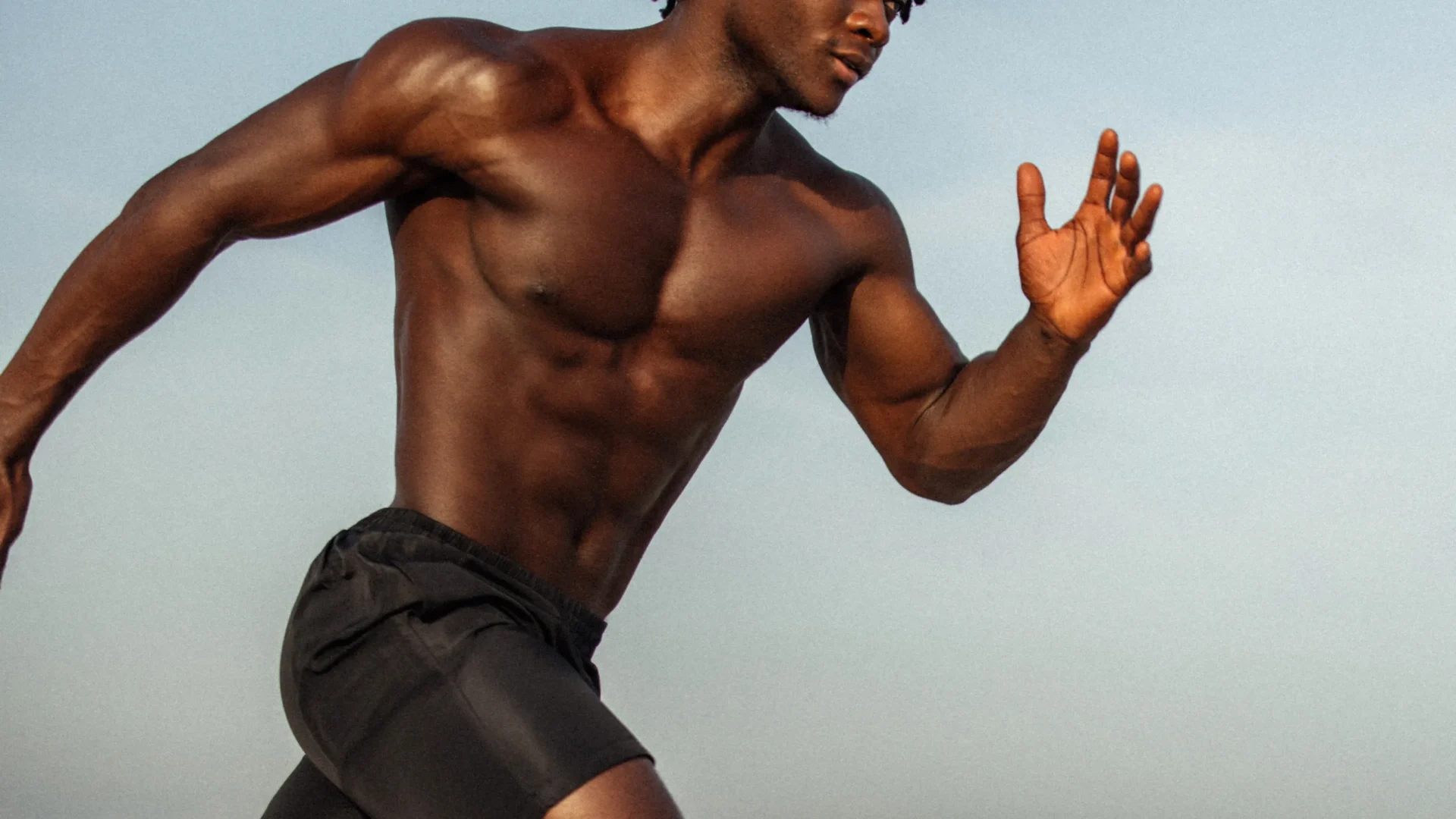Wonder why certain hairstyles and hair care products work for others but not for you? Well, the answer lies in your hair type. You see, your hair has certain characteristics that dictate which styling options and care routines will work best.
In fact, hair experts have now identified 12 different hair types spanning from pin straight to tightly coily. But don’t worry if that sounds overwhelming – figuring out your hair type is simpler than you might think. It just takes a bit of observation and some basic knowledge.
That’s why we’ve put together this handy guide. We’ll walk you through the different hair types, show you how to identify your own, and even provide personalised care tips to help your locks look their absolute best.
What does hair type mean?
The first step to identifying your type of hair is knowing what it truly means. According to L’Oréal Paris (2021), the hair is made up of a protein called keratin, which grows from the root located at the bottom of the hair follicle. You can tell what type of hair you have by its texture, structure, and other characteristics such as curl pattern, thickness, elasticity, oiliness, and hair follicle shape.
Your hair’s natural texture—whether coily, curly, wavy, or straight—is determined by the shape of your hair follicles, which are encoded in your DNA. This genetic blueprint influences your hair length and density, which is why some people may have thicker and faster-growing hair than others.
Your hair genetics also ensures that your hair always returns to its original structure, even after chemical treatments or styling. For example, tightly coiled hair will gradually revert to its natural coily state over time, even if it has been relaxed, permed, or curled. It’s your hair’s way of staying true to its roots, no pun intended!
However, regardless of your hair type, embracing and caring for it is important. Your hair is a unique part of you and it is beautiful just as it is.
What is your hair texture?
Now that we’ve understood what hair type means, let’s look at different hair textures and how they relate to your hair type.
Hair texture is the thickness of each hair strand. It affects how well your hair can hold certain hairstyles. There are three categories of hair texture.

The different hair textures are fine (A), medium (B), and coarse (C). Fine hair is delicate and struggles to hold curls. Medium textures are easier to style and hold curls better. Coarse hair is the most challenging to style; though it holds curls, it also frizzes. Frizz makes your hair look messy and is caused by humidity, styling tools, and chemicals.
How to test for your hair texture
To test for your hair texture, follow the steps below:
- Start with clean and damp hair.
- Choose any section of your hair.
- Take a single strand of your damp hair.
- Hold it between your thumb and index finger.
- Trace the strand’s length from tip to base with your fingers.
- What do you feel?
- if it feels very slippery or hard to detect, your hair is fine.
- If you feel some texture as it slides through your fingers, your hair is medium.
- If it feels rough or bumpy, your hair is coarse.
Note that you can also have a combination of hair textures; your baby hairs may be fine, while the rest of your hair may be coarse. So make sure to test many strands from different areas of your head for a comprehensive assessment.
What are the known hair types?
After identifying your hair texture, the next step is to understand the various hair types below and figure out which one is yours.
Hair Type 1 – Straight Hair

Type 1 hair is straight and lies flat against the scalp. As a result, natural oils from the scalp can flow smoothly to the tips of the hair, making it the shiniest of all hair types.
1A:
1A hair is rare and commonly found among people of Asian descent 1. It is fine, very straight, and lacks any curls. It tends to become oily quickly and thus requires frequent washing.
1B:
1 B hair is also straight but slightly thicker, with more volume and bounce than 1A. Due to its medium texture, it can hold curls better.
1C:
The coarse texture of 1C hair makes it hard to maintain curls for a long time and causes it to frizz. When left to dry naturally, it gains volume, resulting in a tousled look while still lying flat on the scalp.
Tips for Straight Hair Care
To care for this hair type, you need to:
- Check the labels of hair products before buying them to avoid hair products with added oils.
- Don’t overwash. Washing too frequently can stimulate your scalp to produce more oil.
- Use dry shampoo between washes to absorb excess oil.
- Adjust your washing schedule based on your hair’s texture as follows:
- Types 1A and 1B: Wash every 2 to 4 days.
- Type 1C: Wash once every week or two.
Remember to pay attention to how your hair responds and adjust your routine as needed.
More for your Type 1 hair: All You Need to Know To Easily Care For Your Straight Hair
Hair Type 2 – Wavy Hair

The strands of this wavy hair form an ‘S’ shape pattern. It is thicker and less oily than straight hair, with more texture and shape.
2A:
This hair is fine and thin. It is straight from the root, then forms subtle, undefined ‘S’-shaped waves from the midsection. It is also easier to style compared to other type 2 hair.
2B:
Similar to type 2A, the waves in type 2B hair form from the midsection, but the wavy curls are more defined. The hair is thicker and frizzier than type 2A.
2C:
Unlike other type 2 hairs, 2C wavy curls start from the scalp, and it’s thicker with very defined ‘S’ shapes. 2C hair is also the frizziest, especially in damp weather.
Tips for Wavy Hair Care
To care for your wavy hair, you should:
- Use lightweight hair products like mousse or gel. They will boost and define your waves without weighing them down.
- Limit heat styling to prevent frizz. Always apply a heat protectant when using hot styling tools.
- Use water-based styling products. Look for ones that are “volumizing” or “lightweight.” They will enhance your waves without flattening them.
- Scrunch your hair when applying products. Then, air-dry or use a diffuser on low heat to keep the waves.
- Use a water spray to refresh your waves between washes and restore their natural curl patterns.
More for your Type 2 hair: All You Need to Know To Easily Care For Your Wavy Hair
Hair Type 3 – Curly

For this type of hair, the strands are like spiral curls, similar to ringlets. The curls are defined but still prone to tangling and breaking.
Curly hair doesn’t lie flat on the scalp, so oil can’t easily travel from the scalp to the hair strand, making it more prone to dryness and frizz. Though curly hair has more volume than straight and wavy hair, it is less dense than coily hair.
3A:
This hair has looser curls with wider circumferences due to looser loops in an ‘S’ form.
3B:
Type 3B tends to have medium to springy curls. The curls can vary from ringlets to corkscrews. It also tends to have a dense, rough look and more volume than 3A.
3C:
3C curls are more corkscrews than ringlets. The curls are very tight, thick, and voluminous. This hair is also prone to shrinkage; hence, it is also referred to as “curl-coily.”
Tips for Curly Hair Care
- Avoid brushing your dry hair, as it can damage defined curls and cause roughness.
- Only comb your hair when it’s wet. Use a leave-in conditioner. Then, either finger-comb it or use a wide-tooth comb.
- Dry your hair naturally when possible to maintain your curl pattern.
- If using a blow dryer, use the lowest heat setting and limit contact time with hot combs or curling irons (American Academy of Dermatology recommendation).
- Avoid frequent ponytails, as they can cause thinning and hairline loss. Try hairstyles that don’t pull all your hair back, like a loose weave.
- Choose hair products without silicones and sulfates. These ingredients may tame frizz, but they can dry out and break your hair over time.
More for your Type 3 hair: All You Need to Know to Easily Care For Your Curly Hair
Hair Type 4 – Coily

Coily hair is commonly found in people of African descent. It grows almost parallel to the scalp and has a slow growth rate of about 0.9 centimetres per month because it twists as it grows instead of growing straight 2.
Type 4 hair strand is tightly curled with well-defined ringlets and zigzags. It is coarse and fragile, making it prone to damage and breakage. It shrinks a lot after washing. The coils prevent its natural oils from travelling down the hair. So, people with this type of hair often have dry, itchy scalps.
4A:
4A hair has a wiry or fine curl strand that shrinks down to half its original length when dry. It has the most defined curl pattern among all the type 4 hairs.
4B:
The curls of 4B are less defined than type 4A curls but clearer than type 4C hair. This is because it has tight curls in a Z-shaped coil pattern. This hair is also prone to shrinkage.
4C:
Compared to 4A and 4B, this texture has tighter, less defined curls forming almost O-shaped coils. It’s densely packed, coarse, and prone to significant shrinkage when wet. This hair type is fragile and easily tangles, requiring careful handling.
Tips for Coily Hair Care
- Prioritise moisture. Use deep conditioning creams, butter like shea butter, and masks. They keep your delicate, coily hair soft and healthy.
- Use protective styles, like braids and weaves, less often. They can prevent proper conditioning and treatment of your hair.
- When choosing protective styles, make sure they’re not too tight. This will help avoid damage and breakage to your scalp.
- Give your hair regular breaks from protective styles. This lets it get direct care and lets your scalp breathe.
- Avoid frequent and rough combing of your coily hair, as it is fragile and prone to breakage.
- Apply a rich leave-in conditioner and shea butter. They will soften and moisturise your hair. This will make it easier to comb and protect it from damage.
- Be cautious with braided extensions. They can limit your ability to care for your hair.
More for your Type 4 hair: All You Need to Know to Easily Care For Your Coily Hair
Why should you know your hair type?
It is very important to know your hair type for the following reasons:
- Embrace and enhance your natural hair texture.
- Figure out the best way to style your specific hair type.
- To choose the right products that actually work for your hair.
- Avoid wasting time and money on hair products that are not suited for your hair.
- Prevent damage to your hair by avoiding treatments that are not suitable for your hair type.
Conclusion
Knowing your hair type helps you choose the right care and styling methods. It prevents using products not suited for your hair, like using 3B products on 4A hair. This ensures you use products that work best for your hair’s natural features, giving you the best results.
Next Step:
To find the right products for your hair, you can either consult a dermatologist or experiment with different hair products. To help you start with the right products, subscribe to our FREE newsletter to receive tailored posts on how to care for your specific hair type. Our expert advice will guide you in choosing the right products and techniques for your unique hair needs.
REFERENCES
Activilong (n.d.). The Influence of Ethnicity on Hair Structure. (online) Activilong. Available at: https://activilong.com/en/content/96-the-influence-of-ethnicity-on-hair-structure#:~:text=The%20African%20hair%20is%20generally (Accessed June 26, 2024).
American Academy of Dermatology Association (2024). How to Stop Damaging Your Hair. (online) www.aad.org. Available at: https://www.aad.org/public/diseases/hair-loss/insider/stop-damage (Accessed June 26, 2024).
Copyright © Kao Corporation All rights (n.d.). How Often Should You Wash Your Hair? | John Frieda. (online) www.johnfrieda.com. Available at: https://www.johnfrieda.com/en-uk/blog/hair-care/how-often-to-wash-hair (Accessed June 26, 2024).
HeatTM, F.H.I. (2022). What Is Your Hair Type? (online) FHI HeatTM. Available at: https://www.fhiheat.com/blogs/journal/what-is-your-hair-type (Accessed June 26, 2024).









